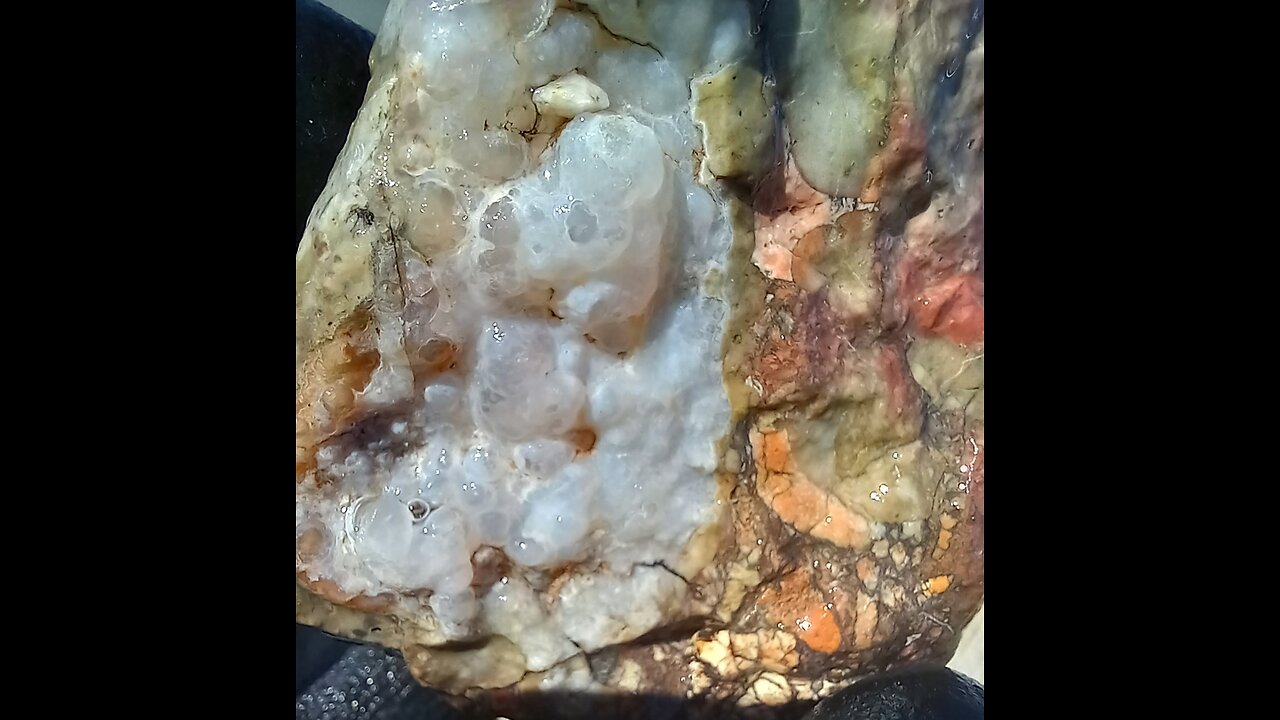Premium Only Content

Botryoital Opal w/ A Little of Everything!
Opal is a hydrated amorphous form of silica, with a water content typically between 3 and 21% by weight, most commonly around 6-10%. It's deposited at relatively low temperatures and can be found in the fissures of various rock types, including limonite, sandstone, rhyolite, marl, and basalt. Here's a deeper look into opal:
Types of Opal:
Precious Opal: Known for its "play-of-color," which is an optical phenomenon where colors flash or change as the angle of light or observation changes. This effect is due to the diffraction of light through the microscopic silica spheres within the opal.
Common Opal: Lacks the play-of-color and can come in a variety of colors like white, black, grey, yellow, orange, red, or brown. It's often referred to as "potch" when not gem-quality.
Fire Opal: Typically ranges in color from yellow to orange to red and can be transparent to translucent. Fire opals can exhibit play-of-color, but their name comes from the fiery body color.
Boulder Opal: A type of opal naturally attached to its host rock. It's often cut with the host rock to provide stability and to enhance the visual appeal.
Matrix Opal: The opal fills the cracks and cavities within the host rock, creating a network of opal that's visible on the surface.
Formation:
Primary Opal: Forms through the slow deposition of silica from groundwater in cavities or fractures of rocks.
Secondary Opal: Can form by weathering or alteration of other minerals, often in more superficial environments or through the action of silica-rich waters.
Locations:
Australia: The world's leading source, especially for precious opal, with significant deposits in places like Coober Pedy, Lightning Ridge, and White Cliffs.
Ethiopia: Known for its black opals and more recently discovered opal fields.
Mexico: Famous for fire opals.
Brazil: Produces a variety of opals, including crystal opal.
Properties:
Hardness: Typically ranges between 5.5 to 6.5 on the Mohs scale, though it can be softer if less hydrated or harder if more silica-rich.
Luster: Can range from waxy to resinous to vitreous.
Transparency: Varies from opaque to semi-translucent to transparent.
-
 UPCOMING
UPCOMING
The Mel K Show
1 hour agoMORNINGS WITH MEL K - Ending Endless Wars? Not if the EU Gets Their Great Reset - 11-18-25
196 -
 LIVE
LIVE
Grant Stinchfield
31 minutes agoAI Sam Altman’s Baby Lab: Silicon Valley Tries to Play God!
87 watching -
 1:00:48
1:00:48
VINCE
3 hours agoHere Come The Epstein Files | Episode 171 - 11/18/25 VINCE
168K76 -
 1:53:27
1:53:27
Benny Johnson
2 hours ago🚨House Voting to Release Epstein Files as Trump Plan REVEALED, Democrat PANIC: ‘It Was All A Trap…’
24.5K30 -
 47:12
47:12
theoriginalmarkz
2 hours agoCoffee with MarkZ. 11/18/2025
14.8K5 -
 1:36:43
1:36:43
Graham Allen
3 hours agoDisturbing Connection Between Trump Shooter And FURRIES!! + House Votes To Release Epstein Files!
141K821 -
 2:59:36
2:59:36
Wendy Bell Radio
7 hours agoIt's All Connected.
59K78 -
 1:56:58
1:56:58
Badlands Media
5 hours agoBadlands Daily: November 18, 2025
30.6K9 -
 LIVE
LIVE
Major League Fishing
5 days agoLIVE! - Fishing Clash Team Series: Summit Cup - Day 3
106 watching -
 1:13:28
1:13:28
The Big Mig™
4 hours agoBusted, Antifa Funding Bombshell
3.06K12